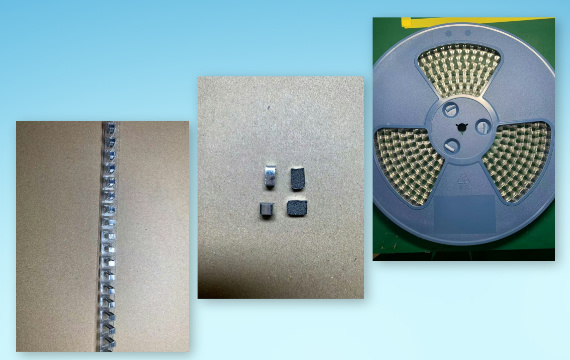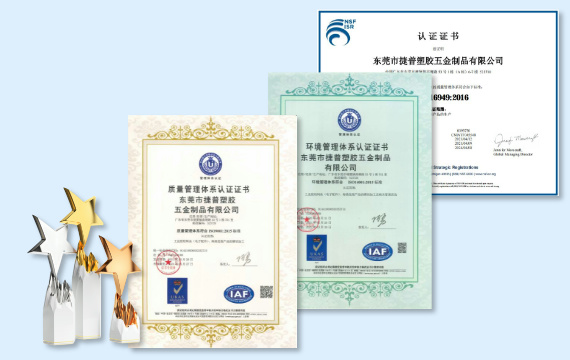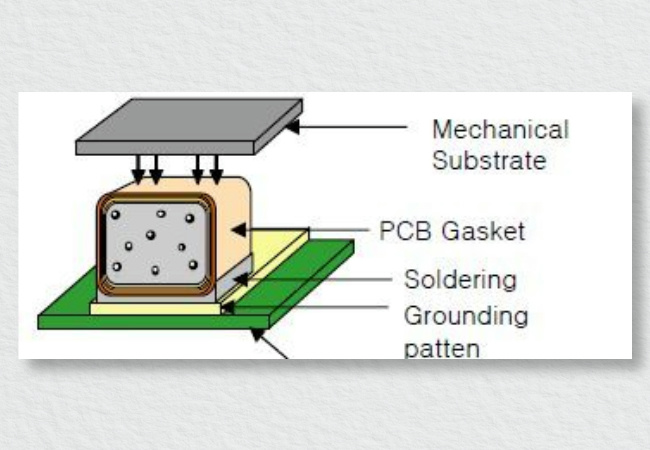Custom PCB Shielding Gaskets Manufacturer In China
-
Custom PCB Shielding Gaskets – Any size, shape, and design to fit your needs.
-
Premium PCB Shielding Gaskets – Engineered for durability and high performance.
-
Rapid Prototyping – Get your custom PCB gaskets in just 3 days.
-
ISO9001 & ISO14001 Certified – Quality you can trust with strict manufacturing standards.
- Product Details
- Application Overview
- Material Insights
-
PCB shielding gaskets are flexible conductive materials used in electronic devices to block interference.
-
They offer low resistance, ensuring stable signal transmission and strong soldering performance.
-
With excellent elasticity, they maintain shape and function after repeated compression.
-
These gaskets resist heat and moisture, making them ideal for harsh environments.
-
Compatible with SMT assembly, they provide a reliable EMI shielding solution for modern electronics.
Where Are PCB Shielding Gaskets Used?
At Jiepu, we have supplied die-cut solutions for a range of industries, including consumer electronics, automotive, telecommunications, industrial automation, medical devices, and aerospace. One of the key materials we work with is PCB Shielding Gaskets—a flexible, conductive material used to block electromagnetic interference (EMI) and prevent electrostatic discharge (ESD). Let’s explore where these gaskets are used.
1. Consumer Electronics
- Smartphones & Tablets – Found in the motherboard, battery cover, and camera module to keep signals stable and reduce interference.
- Laptops – Used in keyboards and touchpads to block EMI and cushion internal components from shocks and vibrations.
2. Telecommunications
- Base Stations & Routers – Help ensure reliable data transmission by shielding sensitive components like RF modules and antennas from EMI.
- Modems – Improve electrical connections and prevent signal disruptions.
3. Automotive Electronics
- Electric Vehicles (EVs) – Protects battery management systems and motor controllers from interference.
- Autonomous Driving Systems – Ensures smooth operation of sensors, cameras, and radar by preventing signal distortion.
4. Industrial Automation
- Robots & PLCs – Used in control boards and sensors to maintain signal integrity in factory environments.
- Servo Drives – Protects against EMI while operating under extreme conditions like high temperatures and humidity.
5. Medical Devices
- Imaging Systems (X-ray, Ultrasound) – Ensures clear and accurate readings by blocking unwanted electromagnetic noise.
- Wearable Health Devices – Helps smartwatches and glucose monitors maintain reliable connectivity.
6. Aerospace & Defence
- Aircraft & Satellites – Essential in navigation and communication systems, as they must function without interference in extreme conditions.
- Radar Systems – Used to keep signals clean and precise.
Types of PCB Shielding Gaskets & Their Material Properties
PCB Shielding Gaskets come in different materials, each offering unique benefits in electromagnetic shielding (EMI protection). Below is a simple breakdown of the main types and their properties.
1. Metal Materials
- Nickel Silver – A copper-nickel alloy with good electrical and thermal conductivity. It offers decent shielding but is softer and more expensive than stainless steel. Easy to solder.
- Stainless Steel – Strong and corrosion-resistant with good shielding properties. However, it has lower conductivity and is difficult to solder unless coated. Ideal for harsh environments.
- Tinplate (Tin-coated Steel) – The cheapest option with easy soldering but the weakest shielding performance.
2. Conductive Silicone Foam
- Soft, elastic, and durable, making it ideal for repeated compression.
- Low resistance and high heat resistance, ensuring stable performance.
- Halogen-free & RoHS compliant, making it eco-friendly and flame-retardant.
3. Conductive Foil
- Made from copper or aluminium, offering high conductivity and excellent shielding.
- Flexible but fragile, requiring extra support in some applications.
4. Conductive Foam
- Lightweight, compressible, and highly elastic, making it great for both shielding and cushioning.
- Meets environmental and safety standards like RoHS.
5. Conductive Fabric
- Made from woven conductive fibres, combining flexibility with good conductivity.
- Perfect for wearables and flexible electronics.
6. Conductive Adhesive
- A glue-like material with conductive fillers, allowing it to bond components while providing EMI shielding.
- Good electrical conductivity & adhesion, ideal for electrical connections and shielding.
SMT Conductive Silicone Foam Gasket
SMT Conductive Silicone Foam Gasket is a high-performance conductive material designed for electronic devices, offering excellent electrical conductivity and mechanical resilience. It features a high-elasticity silicone foam core, providing superior cushioning and rebound properties.
This gasket is widely used in EMI shielding, PCB grounding, and shock absorption for electronic components. It serves as a reliable grounding terminal for PCB boards while also acting as a cushioning layer to protect components from external impact. Compared to traditional conductive foam and metal clips, it offers superior conductivity, durability, and ease of integration.
Conductive Foil PCB Shielding Gasket
The Conductive Foil PCB Shielding Gasket is a flexible conductive material designed for EMI shielding and grounding in PCB components. It consists of a high-purity aluminum or copper foil layer, providing excellent conductivity, and an elastic silicone or polyurethane foam core for cushioning.
It integrates seamlessly with SMT (Surface Mount Technology) for automated production and is customizable in size and shape. With RoHS compliance, UL94 V-0 flame resistance, and anti-corrosion coatings (tin, gold, or nickel), it offers superior durability.

Conductive Rubber PCB Shielding Gasket
The Conductive Rubber PCB Shielding Gasket is a flexible, conductive material designed for EMI shielding and grounding in electronic devices. It consists of a silicone or synthetic rubber base embedded with conductive particles like silver-plated copper, silver-plated aluminum, or nickel-coated graphite to ensure conductivity.
With a surface resistance below 0.1Ω/□ and a volume resistance as low as 0.0007Ω·cm, it delivers superior EMI shielding exceeding 65dB. The gasket supports 10%-40% compression, maintaining elasticity and quickly returning to its original form.It also withstands extreme environments, operating between -40°C and 160°C, while maintaining stability against salt spray, high humidity, and high temperatures with minimal resistance and elasticity changes.
The Product Process of The PCB Shielding Gaskets
The die-cutting process for PCB Shielding Gaskets ensures precise shaping and optimal performance in EMI shielding applications. It begins with material selection, including conductive rubber infused with metal-coated particles and adhesive-backed conductive foils. The rubber undergoes mixing, molding, and curing to achieve the required conductivity and elasticity. For foil-based gaskets, cutting and surface treatment improve adhesion and conductivity.
Once materials are prepared, laminating and die-cutting shape the gaskets into precise dimensions. Kiss-cutting is used for adhesive-backed designs, while rotary or laser cutting ensures clean edges for complex geometries. Quality testing verifies conductivity, compression, and durability before protective packaging ensures safe transport and storage.

Certified Quality in PCB Shielding Gasket Die-Cutting
We ensure top-quality PCB Shielding Gasket solutions with strict adherence to international standards. Our die-cutting services are backed by ISO 9001, ISO 14001, andIATF 16949 certifications, guaranteeing precision, reliability, and environmental responsibility. Whether for automotive or electronics, our certified processes ensure durable, high-performance shielding solutions tailored to your needs.
Check Out Extra Die Cutting Supplies
PCB Shielding Gaskets – Sample & Quotation Process
At Jiepu, we make it easy for you to get PCB shielding gasket samples and a clear pricing estimate. Here’s how our process works:
Requesting a Sample
1️⃣ Submit Your Request – Provide details like material type, dimensions, and quantity, along with a 2D or 3D drawing.
2️⃣ Drawing Confirmation – We review your design to ensure it’s suitable for production.
3️⃣ Sample Production – We create your sample within 3 days, using the right materials and precise cutting techniques.
4️⃣ Quality Check – Our team inspects the sample to ensure accuracy in size, appearance, and performance.
5️⃣ Delivery – Samples, along with material certificates and reports, are shipped to you, and we provide tracking details.
Getting a Quote
🔹 Submit Your Quote Request – Tell us the product details, quantity, and delivery expectations.
🔹 Cost Analysis – We calculate costs based on materials, tooling, processing, labour, and expected waste.
🔹 Quote Submission – You’ll receive a detailed price breakdown within 24 hours, including volume-based pricing.
Next Steps
✔ Sample Approval – Review your sample and share feedback for adjustments if needed.
✔ Production Scheduling – Once approved, we begin mass production with quality checks at every step.
✔ Shipping & Support – We ensure timely delivery and offer after-sales assistance.
📩 Need PCB shielding gasket samples or a quote? Contact us today!
We provide die-cutting solutions for various shielding needs. Choosing the right PCB shielding gaskets material is key to ensuring effective protection.
Metal Materials
- Copper – Excellent conductivity, great for high-frequency EMI shielding.
- Aluminium – Lightweight, corrosion-resistant, and cost-effective.
- Nickel – High corrosion resistance, often used with other metals.
- Stainless Steel – Strong and durable, ideal for harsh environments.
Conductive Elastomers
- Conductive Silicone – Flexible, stable, and suitable for surface mounting.
- Conductive Rubber – Good conductivity with elastic properties.
Conductive Fabrics & Composites
- Conductive Fabric – Flexible, ideal for complex shapes.
- Conductive Foam – Lightweight and compressible for cushioning and shielding.
Conductive Foils
- Low resistance, compatible with smartphones and automotive electronics.
Other Options
- Conductive Coatings – Low-cost, easy to apply for partial shielding.
Selecting the right material depends on shielding effectiveness, durability, cost, and environmental resistance.
At Jiepu, we offer die-cutting solutions, including SMT-compatible PCB shielding gaskets.
These gaskets use conductive silicone and conductive foam, ensuring flexibility and conductivity.
They can be placed directly on PCB surfaces using SMT technology.
They provide strong EMI shielding, grounding, and electrical connections.
They maintain elasticity and conductivity even after repeated use.
With low compression, they offer stable performance with minimal resistance.
They withstand high temperatures and oxidation, making them ideal for reflow soldering.
Custom sizes are available to fit different applications.
They comply with RoHS standards and are halogen-free.
SMT Conductive Foam Gasket Temperature Range
The typical temperature range for SMT conductive silicone foam gaskets is -40°C to 160°C.
They can briefly withstand temperatures up to 280°C, but only for short periods.
Some high-quality gaskets can handle up to 300°C in brief exposure.
If your application requires higher temperature resistance, we recommend choosing materials with better thermal properties or custom solutions.
Yes, our PCB Shielding Gaskets support reflow soldering.
The SMT conductive silicone foam gaskets maintain their elasticity and conductivity during reflow soldering.
They perform excellently in high temperatures and have strong bonding with the PCB after soldering.
Different soldering temperature strategies can be used during the second soldering process.
For example, use SAC305 solder paste in the first reflow with a peak temperature of 245°C.
Then, opt for low-temperature solder materials such as FL170/180/200 in the second reflow.
In Smartphones, PCB Shielding Gaskets Are Used In Several Key Parts:
They help with Grounding and EMI Shielding on the mainboard, protecting sensitive circuits like antennas, power supplies, and other critical areas.
For Antenna Components, they ensure a stable signal and good electromagnetic compatibility by providing grounding and signal transmission.
They also isolate different Wireless Communication Modules, like GPS, Wi-Fi, and 5G, to prevent interference.
In Sensor Modules, they shield and ensure smooth signal transfer, for components like pressure and touch sensors.
With their flexibility, PCB Shielding Gaskets also act as buffers to protect sensitive parts from impact.
Compared to traditional materials, they offer better conductivity, elasticity, and reliability, making them ideal for modern, compact PCB designs.
These applications show how important PCB Shielding Gaskets are for smartphones, improving both performance and reliability.
SMT Conductive Silicone Foam Gaskets Can Be Used In High Humidity Environments, But Their Performance Depends On Material Properties And Processing.
The core of these gaskets is silicone foam, with a conductive metal layer like copper, nickel, or gold. Silicone offers good weather resistance and corrosion resistance, making it stable in humid conditions.
After special processing, these gaskets have added anti-oxidation and anti-corrosion properties, which makes them suitable for wet environments.
Tests show that SMT conductive silicone foam gaskets perform well in temperature and humidity tests. Their surface resistance remains low even in high humidity, ensuring good conductivity.
They are widely used in electronics like smartphones, tablets, and car electronics, which often operate in complex environments, including humidity.
While they work well in moist conditions, it’s still important to test materials and processes during the design phase to ensure long-term reliability.
In Electric Vehicles, PCB Shielding Gaskets are mainly used to address several key issues:
-
EMI (Electromagnetic Interference) and EMC (Electromagnetic Compatibility) problems.
Electric vehicles have many electronic devices, like battery management systems and motor controllers, which can cause electromagnetic interference. The gaskets help shield these devices, ensuring they work properly in complex environments. -
Adaptability to High Humidity and harsh environments.
Electric vehicles often operate in tough conditions. The gaskets are made from durable materials like conductive silicone foam, which ensures stable performance even in wet, hot, or dusty environments. -
Grounding and signal integrity.
The gaskets help establish solid grounding connections in electronic control systems, ensuring that the signals stay clear and stable, which is crucial for devices like battery management systems. -
Miniaturisation and weight reduction.
Electric vehicles need lightweight parts, and the gaskets are designed to provide efficient shielding and grounding without adding bulk. -
High Reliability and durability.
The gaskets are made with high-quality materials that ensure they last, even over long periods of use, keeping the vehicle’s systems reliable. -
Heat Management.
As electric vehicle systems generate heat, the gaskets are designed to help manage heat effectively, ensuring the PCB stays cool and continues to function well.
Some of the specific applications include:
- Battery management systems (BMS): Shielding against high-frequency noise.
- Motor controllers: Ensuring stable signals.
- Onboard communication systems: Protecting from external interference.
- Radar and sensors: Ensuring high-precision signal transmission.
SMT Conductive Silicone Foam Gaskets Can Help Solve Vibration Problems On Circuit Boards.
They Have Excellent Elasticity And Bounce-Back Properties.
This Allows Them To Absorb Shock And Protect The PCB From Damage.
The Soft Silicone Foam Core Can Absorb Energy During Vibration Or Impact.
This Helps Maintain The Stability Of The Electrical Connection.
They Are Also Durable And Reliable Over Time.
They Will Keep Their Conductivity And Shock Absorption Ability, Even After Long-Term Use.
Jiepu Provides High-Quality Die-Cutting Services For These Gaskets, Ensuring Precise Fit And Performance.
An SMT Conductive Silicone Foam Gasket is a high-performance conductive material used in electronic devices. It is designed to provide EMI shielding, grounding, and cushioning while being compatible with Surface Mount Technology (SMT) for automated assembly.
- Core Material: High-elasticity silicone foam, offering excellent compression and rebound properties.
- Outer Layer: A metal-coated PET or PI film (e.g., tin, gold, or nickel) that enhances conductivity and durability.
It has an ultra-low surface resistance of ≤0.03Ω/□, ensuring effective electromagnetic interference (EMI) shielding and reliable electrical grounding.
- High Elasticity: Can withstand up to 40% compression with a 92% rebound rate, ensuring long-term resilience.
- Strong Structural Integrity: Resistant to deformation, making it ideal for SMT placement on PCB boards.
Yes, it operates reliably in a -40°C to 280°C temperature range, making it suitable for high-temperature reflow soldering.
Absolutely. It has strong oxidation resistance, passing salt spray tests with minimal change in surface resistance.
- EMI Shielding: Prevents electromagnetic interference in sensitive electronics.
- PCB Grounding: Provides a secure grounding terminal for circuit boards.
- Shock Absorption: Protects components by cushioning against mechanical impact.
Yes, it is RoHS-compliant, free from halogens and heavy metals, making it safe for various applications.
A Conductive Foil PCB Shielding Gasket is a flexible conductive material used for electromagnetic interference (EMI) shielding and grounding in PCB assemblies. It provides reliable electrical conductivity, cushioning, and environmental resistance, making it ideal for various electronic applications.
- Conductive Foil Layer: Made from high-purity aluminum or copper foil, ensuring excellent conductivity.
- Elastic Core: Filled with silicone or polyurethane foam, providing flexibility and impact absorption.
- Adhesive Layer (Optional): Some versions include conductive or non-conductive pressure-sensitive adhesive (PSA) for easy mounting.
- High Elasticity: Can withstand up to 40% compression with a 92% rebound rate, ensuring long-term resilience.
- Strong Structural Integrity: Resistant to deformation, making it ideal for SMT placement on PCB boards.

















